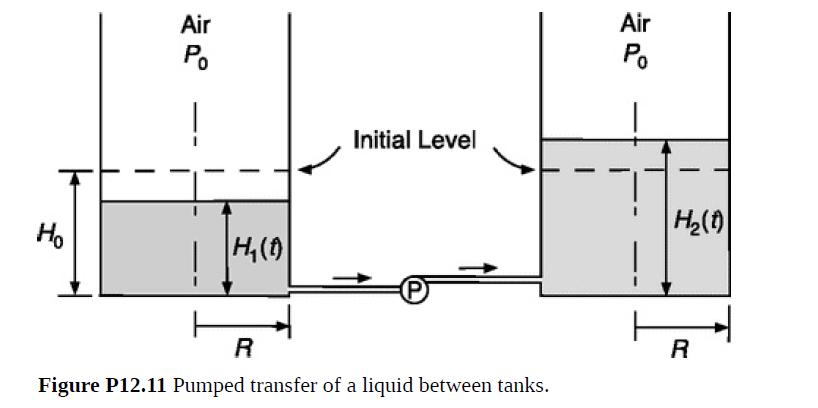All of the liquid in a tank is to be transferred to another tank of the same
Question:
All of the liquid in a tank is to be transferred to another tank of the same size. As shown in Fig. P12.11, both are of radius R and at first they are slightly less than half full, with a liquid height H0 in each. They are open at the top and are connected at the bottom by a pipe with a constant-speed centrifugal pump. The pump performs as in Eq. (12.3-6) with n = 2. For simplicity, assume that viscous losses outside the pump itself are negligible.
(a) What is the minimum value of the parameter A that is needed? In other words, how large must the pump be?
(b) Use the engineering Bernoulli equation and pump characteristics to show that
where ΔH = H2 − H1 is the difference in liquid levels. Combine this with a mass balance to obtain the differential equation that governs ΔH.
(c) A more convenient dependent variable than ΔH is ϕ = (A − ΔH)/H0. Show that
where ϕ0 = ϕ(0) = A/H0 and V0 = πR2H0 is the initial liquid volume in either tank.
(d) What is the time tp required to transfer the entire volume?
(e) How will Q vary with time?
Step by Step Answer:

Introduction To Chemical Engineering Fluid Mechanics
ISBN: 9781107123779
1st Edition
Authors: William M. Deen





